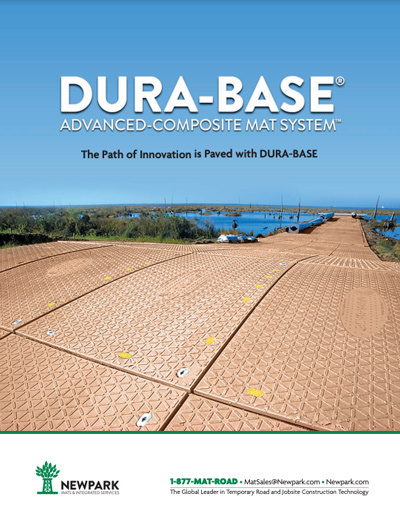Newpark dedicates itself to restoring the land to its previous native or planned condition.
In an era of increasing environmental awareness and concern for sustainability, right-of-way restoration services are an essential and responsible approach to land management that benefits both people and the planet. Restoration services play a crucial role in maintaining the ecological balance, preserving biodiversity, and ensuring the safe operation of transportation and infrastructure. They contribute to sustainable land management practices, helping protect the environment and minimize the ecological footprint of human activities. Newpark dedicates itself to restoring the land to its previous native or planned condition. We can achieve this with varying techniques and equipment.
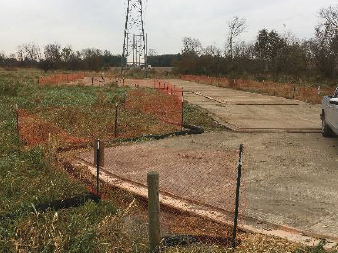
USING DURA-BASE
At Newpark, we commit to sustainability. We produce and deliver a product designed to work with the environment and not against it. Thanks to the patented design, sealed construction, and material composition, DURA-BASE has shown itself invaluable in environmentally sensitive areas such as wetlands, swamps, muskeg, tundra, native prairie, and deserts. DURA-BASE mats are non-porous, significantly reducing environmental risk from cross-contamination through absorption and carriage in the mat structure, especially from invasive species. Wood mats retain contaminants and trap solids between boards and cannot be effectively cleaned, only burned or buried. The DURA-BASE design also significantly reduces the impact on the land. Since our mats pin together as a system they are able to distribute load across a larger surface area, thus reducing the impact to the underlying surface or substrate. As a result, clients have less damage to project settlements, translating to fewer restoration needs compared to wood mat alternatives.
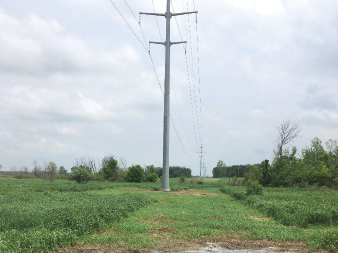
TEMPORARY STABILIZATION
Objective: Provide immediate ground cover to reduce erosion, sediment loss, and water pollution for the short term or until the project calls for permanent stabilization.
Materials: Common materials include straw mulch, hydraulic mulch, geotextiles, and rolled erosion control products. Other materials may consist of planting cover crops, native grasses, or other vegetation that helps prevent erosion and supports the recovery of the ecosystem.
Duration: Typically designed to last a few months to a year.
Site Preparation: This may include rough grading but is generally less intensive than preparations for permanent stabilization.
Maintenance: Regularly inspect areas where erosion is evident, or stabilization materials have failed. Make repairs promptly.
Transition: After stabilizing the ground and the environment has had time to recover, more permanent and sustainable solutions often replace those temporary stabilization methods.
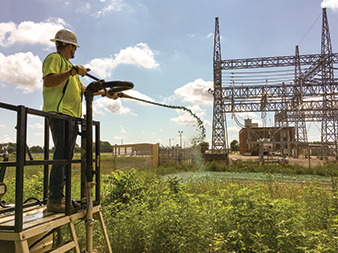
PERMANENT STABILIZATION / HYDROSEEDING
Objective: Achieve long-term stabilization by establishing vegetative cover or other permanent erosion-resistant surfaces. It's a more comprehensive approach to rehabilitating and protecting disturbed or damaged terrain in a sustainable and long-lasting manner.
Materials: Hydroseeding typically involves spraying a slurry of seed, mulch, fertilizers, and bonding agents. Other methods can include sodding, planting, or even installing permanent structures like paving, retaining walls, and check dams to control runoff.
Site Preparation: Typically involves fine grading, topsoil application, pH adjustment, and soil conditioning to support vegetation growth.
Species Selection: Choose plant species that are native or adapted to the site conditions. Consider drought tolerance, growth rate, and other environmental factors.
Maintenance: Regularly monitor for vegetation establishment. Water, fertilize, and reseed as needed.
Monitoring: Assess for successful establishment, and if the area doesn't achieve specific benchmarks (like percent cover), determine the reasons and make adjustments.
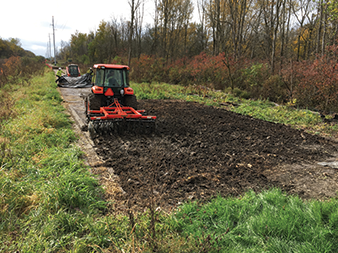
WETLAND & STREAM RESTORATION
Objective: Crucial ecological practices aimed at rehabilitating and enhancing the health and functioning of wetlands, streams, and their associated ecosystems to their natural state.
Assessment: First, assess existing conditions, historical data, and desired future conditions thoroughly.
Design: The design might include re-contouring landforms, altering hydrologic patterns, reintroducing native plant species, and adding habitat features.
Permitting: Environmental regulations often protect wetlands and streams. Ensure to obtain all necessary permits before starting work.
Materials: Common materials include native plants, logs, boulders, and engineered structures.
Implementation: Carefully execute the restoration plan, monitor for changes, and adjust strategies if outcomes deviate from expectations.
Maintenance: Involves managing invasive species, maintaining water flow, and monitoring sediment buildup.
Long-term Monitoring: Track ecological metrics, such as plant and animal species richness, water quality, and hydrologic patterns, to determine restoration success.


